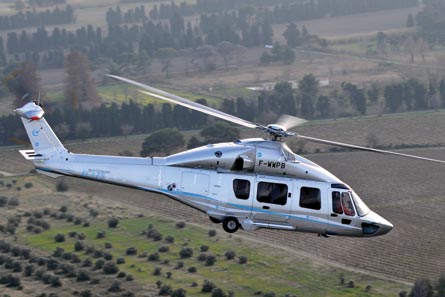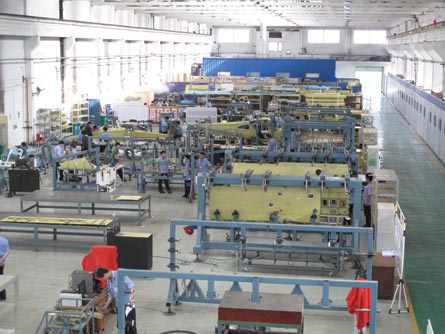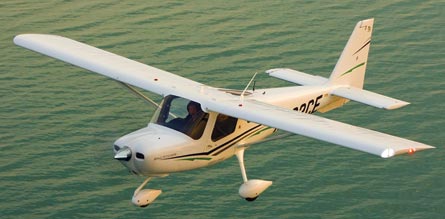In September, Rockwell Collins moved into a new and bigger office in downtown Shanghai, marking its official change in legal status in China to a branch office from the sales office it was running for the past 13 years.
The move will allow the company to house assets to support its customers in the country and perform profit and loss transactions as it seeks to expand its team and presence in China. "We are going to operate more like a subsidiary in China from now," says Rockwell Collins' vice-president and managing director for Asia Pacific TC Chan.
|
|---|
Boeing has forecast that China will require 4,330 passenger aircraft from 2010 to 2029, placing it second to the USA in the list of countries with the greatest demand for new aircraft.
The annual passenger traffic within China is expected to grow at about 7.9% annually from 2009 to 2029, Boeing has said. Currently, the two major airframers have more than 1,400 in-service commercial aircraft in China, as listed by Flightglobal's ACAS database.
Narrowbodies such as the Airbus A320 and Boeing 737 will continue to be popular in China, but airframers say there is a growing demand for larger aircraft such as the Airbus A330 and Boeing's in-development 787.
Over the past decade, foreign aircraft manufacturers have set up shop in China to be closer to the growing customer base in the country and to take advantage of lower labour costs.
Airbus opened its first final assembly line outside Europe in Tianjin in September 2008, producing A320s solely for the Chinese market. The airframer also has a stake in a composites manufacturing centre in Harbin, which will make parts for the in-development A350 XWB. Airbus has handed 5% of the A350 workload to Chinese companies.
Boeing is in the midst of expanding its composites joint venture at Tianjin, which was established in 1999 and produces parts for Boeing aircraft such as the 787 Dreamliner.
The $21 million expansion will double the number of workers at the factory to more than 1,100 early next year from 600, says Jim Simon, Boeing's vice-president of sales for China.
Manufacturers of smaller aircraft, Bombardier and Embraer, have also established a presence in China. In 2003, Embraer launched a joint venture with the Aviation Industry Corporation of China (AVIC) in Harbin to assemble ERJ-145 regional jets. It has delivered 37 aircraft so far, says the Brazilian airframer.
Due to falling demand for smaller regional jets, Embraer is looking at assembling the larger 190 at the plant after the last ERJ-145 delivery, and is waiting for approval from the Chinese government to do so.
In Shenyang, Bombardier has started work on a facility that will manufacture the fuselage for its in-development CSeries, to be opened by partner Shenyang Aircraft (SAC). Construction is expected to be completed by the end of this year, with production beginning next year, says Bombardier China's president Jianwei Zhang.
Commercial aircraft manufacturers are not the only airframers making their presence felt. Cessna's new Cessna 162 SkyCatcher light sport aircraft is being entirely manufactured in China, through a partnership with SAC. Thirty aircraft have been delivered so far, with first delivery taking place in November 2009.
Production will increase to 150 next year, says Cessna's director for China operations Mike Shih. A new facility, which will manufacture the SkyCatcher exclusively, is being constructed at a general aviation airport in Shenyang. Construction has started on the runway, says Shih.
Helicopter manufacturer Eurocopter has also developed a helicopter programme, the EC175/Z15, with AVIC. Its first flight took place in December 2009, and first delivery is scheduled for 2012. The aircraft, which can seat up to 16 people, is a twin-engined helicopter suited for various civil missions.
"China has a great growth potential in the civil and parapublic market. At Eurocopter, we are doing our best to reinforce our presence in this vast territory," Eurocopter China's chief executive Bruno Boulnois has said.
While airframers with a presence in China say they do not have any immediate plans to roll out additional manufacturing capabilities in the country, they plan to expand in other ways, such as hiring more staff and focusing on areas such as customer services.
|
|---|
At Boeing, there are plans for a greater sales and marketing presence in the country, besides the current three executive leadership positions in China, says Simon.
Embraer also says it will focus on improving its sales and marketing effort and, in July, set up a wholly owned subsidiary to drive this. Called the Embraer China Aircraft Technical Services Company, the subsidiary will offer logistics support and spare parts for Embraer customers in China.
Aircraft component suppliers are also strengthening their resources in China to support their clients. In Rockwell Collins' case, this involves setting up a Shanghai-based customer support centre by the end of the year. The centre will consolidate the company's support engineers in one place, says Chan.
GE Aviation, while acknowledging that a growing aircraft fleet will mean more business for its engine offerings, says it sees potential in expanding its avionics business in China. It is supplying part of the avionics on the Comac C919 airliner through a joint venture with AVIC Systems and plans to make further inroads in that area.
"There's a big growth potential in the avionics business and we see that as a natural platform to drive our growth," says GE's vice-president and general manager for commercial aircraft programmes Roger Seager.
Germany's Liebherr-Aerospace, which has flight control and landing gear systems on aircraft operated by Chinese airlines, says it is looking at setting up a repair station for aircraft parts on top of its service support from Shanghai.
But China offers challenges too. Bombardier China's Zhang says miscommunication and misunderstandings can result from a difference in culture, language and business practices. "The key is to have a good attitude to listen, to learn, to understand, and to trust each other," he says.
INFRASTRUCTURE
Players note that crucial infrastructure required to support a growing aviation industry is still lagging. Airbus is in talks with Chinese authorities to study the use of a common air traffic management system, like the SESAR single sky system in Europe, to co-ordinate air traffic and cut flight delays.
But concerns over intellectual property rights have proved to be unfounded. Airbus China's senior vice-president for customer services and internal operations Pierre Steffen says such anxieties have not proven to be more problematic in the country than elsewhere.
"We don't jealously sit on our IP, but we don't hand it over either. We are not paranoid, we know how to protect ourselves," he adds.
Helping to offset some of the challenges encountered in China is a ready pool of skilled talent, as well as costs that have remained relatively competitive, say manufacturers.
Compared with countries such as India, China is not the "absolute lowest cost" manufacturing base, as GE's Seager puts it. But companies say the quality of the work more than makes up for this. "The quality here is good, and you know you can use it on a global scale," says Steffen.
And China's capable engineering workforce makes it easy to hire good talent. Airbus's Steffen says the airframer has had no difficulty in finding the right people and keeping them. The attrition rate at Airbus China is low, at 3%.
Chinese engineers have less experience than some of their Western counterparts, but make up for it in other ways, says GE's Seager. "They are enthusiastic and highly intelligent and have great credentials. They might lack experience, but they bring a different insight."
WESTERN MANUFACTURERS IN CHINA
|
|---|
- Has established Boeing Tianjin Composites, which produces aircraft parts. It is undergoing a $21 million expansion, which will double the number of staff at the factory to more than 1,100 early next year.
- Has a stake in Taikoo (Xiamen) Aircraft Engineering, which offers 747 freighter conversion services.
- Has a stake in MRO joint venture, Boeing Shanghai Aviation Services.
Airbus
- Set up first final assembly line outside Europe in Tianjin to produce A320s. Airbus aims for the line to deliver four aircraft a month by the end of 2011.
- Also has various other joint ventures, such as a Harbin composites manufacturing centre, and support, training and engineering facilities.
Embraer
- Has a plant in Harbin that assembles the ERJ-145, which will deliver the last aircraft in the first half of 2011 as demand for small-sized regional jets has flagged. Embraer is looking at assembling E-190s at the facility, but is awaiting approval from the Chinese government for it to do so.
Bombardier
- Has partnership with AVIC's Shenyang Aircraft (SAC), which produces the fuselage for its Q400 turboprop and CSeries aircraft
- Has started construction of a facility in Shenyang, which will build the fuselage for the CSeries. To be operated by SAC, the facility will be completed by the end of the year and will start production next year.
Cessna
- Has partnership with SAC to produce the Cessna 162 SkyCatcher light sport aircraft, which is entirely manufactured in China. Thirty aircraft have been delivered so far. Cessna expects SAC to produce 150 aircraft next year. Construction of a new SAC facility to manufacture the SkyCatcher has started.
Eurocopter
- Has set up an assembly line in Harbin for the EC120 through a joint venture with China National Aero-Technology Import and Export Corporation and Hafei Aviation Industry.
- Has jointly developed the EC175/Z15 programme with China's Avicopter. First flight of the aircraft took place late last year, with first delivery set for 2012.
- Made in China: Cessna's SkyCatcher light sport aircraft
Source: Flight International


























